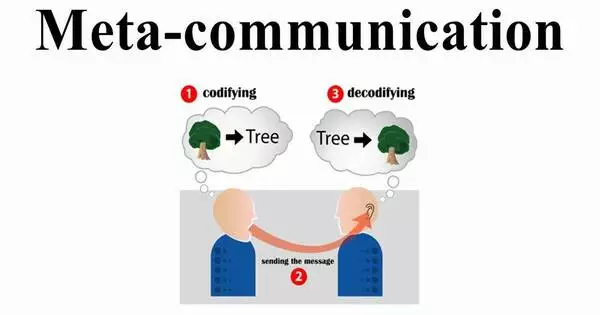Meta-communication is communication about communication. It is a secondary communication (including indirect cues) on how a piece of information should be interpreted. It is the process of providing information on how a message should be interpreted or how people should respond to it. It is founded on the premise that the same message accompanied by various meta-communication might signify something completely different, including its opposite, as in irony.
Meta-communication can take many forms and is an important part of efficient communication since it clarifies and manages the communication process itself. Gregory Bateson popularized the term to refer to “communication about communication,” which he broadened to include “all exchanged cues and propositions about (a) codification and (b) relationship between the communicators.” Meta-communication may be congruent, supportive, or opposed to the spoken communication.
Here are some common examples and aspects of meta-communication:
- Clarifying Ambiguity: When a message is unclear or potentially confusing, meta-communication can be used to provide context or additional information to ensure the message is understood correctly.
- Expressing Emotions and Intentions: It can be used to convey your emotional state or intentions during a conversation. For example, saying, “I’m not upset; I’m just concerned,” helps clarify your emotional state.
- Setting Expectations: It is often used to establish expectations in a conversation. For instance, you might say, “I’d like your honest feedback on this project” to let the other person know what kind of response you’re looking for.
- Feedback and Reflection: In group discussions, individuals might use meta-communication to reflect on the conversation’s progress or to provide feedback on the communication dynamics. For instance, saying, “I’ve noticed that we’re not addressing the main issue here; can we refocus the discussion?” is a form of meta-communication.
- Dealing with Misunderstandings: When misunderstandings occur, you can use meta-communication to address and resolve them. For example, saying, “I think there’s been a misunderstanding. What I meant was…” helps clarify the intended message.
- Non-Verbal Cues: Non-verbal cues, such as body language and tone of voice, also play a significant role in meta-communication. They can provide additional context and meaning to spoken words.
- Signal of Attention: Non-verbal cues and expressions can signal that someone is actively listening and engaged in the conversation, which can be a form of meta-communication to convey interest or attentiveness.
Discussing and defining communication rules inside a group or relationship can also be considered meta-communication. Setting ground principles for respectful discussion, for example, is one method to impact the communication process.
Meta-communication is notably useful for addressing misunderstandings and disagreements, as well as enhancing general communication quality. It fosters mutual understanding and ensures that the intended message is consistent with the perceived message. Individuals and groups can improve the clarity, efficacy, and quality of their interactions by becoming aware of and employing meta-communication successfully.
















